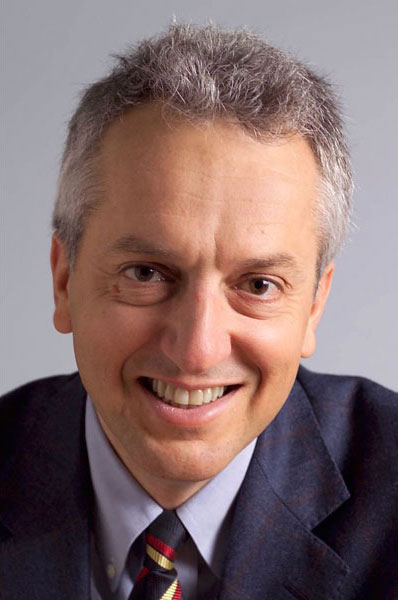It’s time to go geothermal!

3 June 2016 - by Domenico Giardini
Swiss authorities and society at large are actively discussing the national future energy strategy. We have still not solved the basic problem: how will we produce the electricity we need in the near future after the decommissioning of our nuclear power plants?
As we all know, we will soon have to change our way of life by drastically reducing our carbon dioxide emissions, improving the isolation of our houses, covering our roofs with solar panels and driving electric cars. All these efforts, however, will not solve the primary need for the electricity we will lose once we shut down the Swiss nuclear power plants. In the best scenario – assuming that we will manage to maintain or slightly increase our hydropower capability under changing climate, environmental and market conditions – we will be short of 30 to 50 % of our primary electricity production in the winter months.
Baseload power is needed
New renewable technologies are urgently needed for continuous, baseload power to supplement the variable production expected from solar and wind. Among the new baseload electricity sources targeted by the Energy Strategy 2050 is the extraction of geothermal energy, and for good reasons! Due to the high temperatures in the Earth’s interior – up to 6'000 °C in the inner core – geothermal energy is ubiquitous. The extraction of geothermal energy for direct heat applications or electricity production has been successfully implemented in several countries, and to a certain extent in Switzerland. Here, rock temperatures increase with depth about 25 to 30 °C every kilometre, reaching 170 to 190 °C at depths of 4 to 6 km. At these depths, minimizing costs and maximizing safety are the two major requirements for further developing deep geothermal electricity.
Minimizing costs
Granted, geothermal energy costs are still very high today, but so are the costs of every other electricity technology when compared with the very low spot prices on the European electricity market – less than 3 Rp. per kilowatt hour in the afternoon – driven by extensive coal burning in Germany. As we are trying to establish our future energy mix, we should not discard technologies today for fear that they will be too expensive decades from now. Economically sustainable production of geothermal electricity will be possible in Switzerland – particularly when it is also extensively developed across Europe.
Maximizing safety
The main safety issue when developing a deep productive reservoir is induced earthquakes, such as we experienced in Switzerland with the Basel 2006 and St. Gallen 2013 projects. These had to be abandoned when small quakes were felt and caused minor damage at the surface. Induced seismicity is also affecting other geo-energy applications in several European countries, including shale and conventional oil and gas extraction, gas storage, wastewater injection and deep mining. Rather than retreating from new technologies, we need to learn how to control the response of the rock when we extract or inject fluids in order to avoid bigger runaway quakes.
Meeting the goal
For the successful development of geothermal energy, as for every new technology, we need an extensive period of experimentation and investment continuity before the technology will fully demonstrate its potential. To enable the development of geothermal heat and electricity production, the Swiss parliament is debating a range of support measures such as feed-in tariffs, risk guarantees in case of unproductive wells, and a national drilling program to explore the deep underground.
These measures are necessary but probably not sufficient. If we want to reach the target set by the Swiss Energy Strategy 2050 – 4.4 terrawatt hours per year or 7 % of our present electricity supply – all players have to do their part:
- an alliance of cantons should accompany the federal support by defining common licensing regulations and coordinating a number of projects
- a nation-wide experimental and modelling research and development programme should be provided all the way to 2050 (the SCCER-SoE is a first step in the right direction and hopes for a positive parliamentary decision on the promotion of education, research and innovation for 2017 to 2020)
- a number of demonstration projects in different geological settings, using different technologies should be implemented to reach a capacity of 20 megawatts electric installed every year from 2025 to 2050
- electricity producers should make a concerted effort to combine projects for electricity production and direct heat usage
There is no time to waste; this phase of nation-wide demonstration has to start now. It’s time to go geothermal!
You can also find this blog post in the Zukunftsblog of ETH Zurich.
Author

Professor Domenico Giardini is the Head of the Swiss Competence Center for Energy Research – Supply of Electricity (SCCER-SoE) and Professor of Seismology and Geodynamics at the Institute of Geophysics at ETH Zurich.

